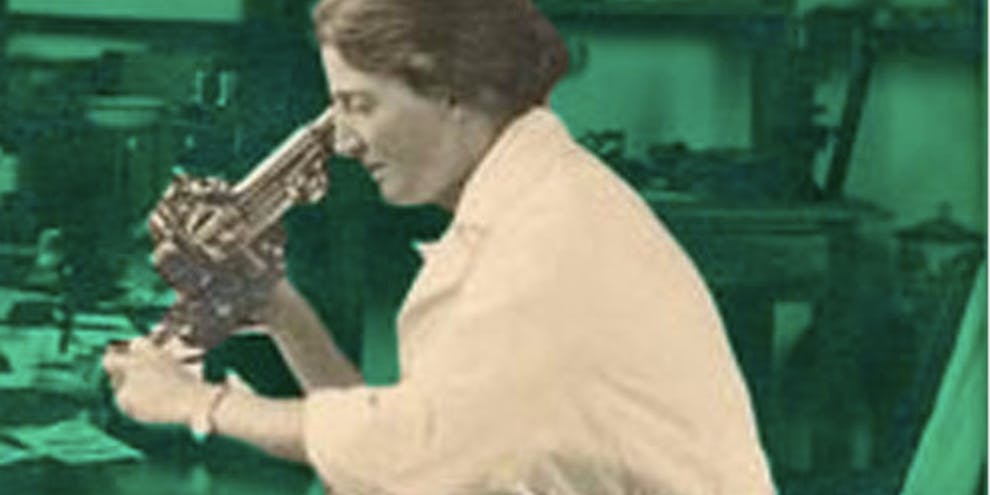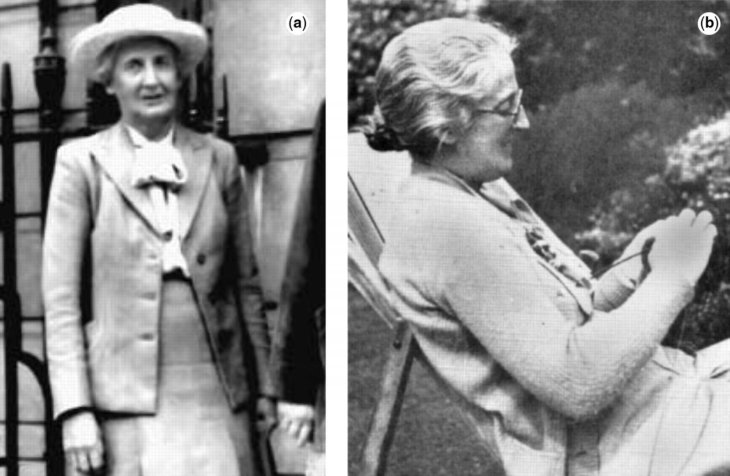The Life And Work Of Lucy Wills, The Scientist Who Discovered Folic Acid In India
Aadhya Khatri - Dec 26, 2019

The name Lucy Wills was known to the world in 1931 when one of her paper, which is about a substance she discovered in India, was introduced
- Japan Hydrogen Breakthrough: Scientists Crack the Clean Energy Code with Mind-Blowing 1,000% Efficiency Jump
- 'Five-second rule' For Food Dropped On The Floor: Is It True?
- Scientists Want To Send 6.7 Million Samples, Including Sperm, To The Moon
The name Lucy Wills was known to the world in 1931 when one of her paper, which is about a substance she discovered in India, was introduced. It is called folic acid now but sometimes many still refer to it as the Wills factor. For those who wonder "who is Lucy Wills," here is some of the highlights on her education, work, and achievements in medicine.
When the above paper was published in 1978, Lucy Wills retired from London’s Royal Free Hospital but after that, she continued researching the effect of nutrition on human health in Fiji and Africa.
Her intellectual and financial independence played an important role in shaping Wills’s work and the opportunities that came to her.

Wills was born on the 10th of May 1888 and was the third child. She attended a private school and then received her former education at the Cheltenham College for Young Ladies. Her college was one of the pioneers that brought the kind of education that used to available to men only, like mathematics, to young females.
The school also encouraged its students to seek an achievement-oriented and public-spirited life. Its architecture might be Gothic but its spirit is of reformists. For more than four decades, the school was under the management of Dorothea Beale, a high-achieving woman. The Cheltenham was a socially and intellectually privileged place.
Wills went to this college when Beale was in the last few years of her management. She was also a supporter of reforms in education for women and her signature is on John Stuart Mills’ petition submitted in 1867 to demand the right to vote for women. Beale was St Hilda’s College’s founder but she passed away before female students got accepted to Oxford.

Attending Cheltenham College for Young Ladies had created a strong basis for Lucy Wills’ academic achievements. After that, Wills went to Newnham College and got a double first honors degree in geology and botany, awarded in 1911. At that time, Wills’ interest was still in science.
She traveled to South Africa after Cambridge with Margaret Hume as a companion. They two remained friends for several years after that. At the time of the trip, Hume was a botany lecturer at Cape Town. Wills considered studying psychiatry but later had a change of heart after a stint work of a nurse and decided to pursue a career in medicine. She came back to London to earn her degree in medicine at the London School of Medicine for Women.
Wills worked with another friend at the Royal Free Hospital’s Department of Chemical Pathology. During this time, her interest in medical biology grew, so did advancements in this field. Margaret Balfour of the Haffkine Institute in Bombay, India found out about the widespread of a fatal and serious form of anaemia during pregnancy. In 1926 in Boston, Murphy and Minot made public their pioneering work on treating pernicious anaemia with diet.
Balfour later contacted Wills but we are not sure why. It might be because the history of the London School of Medicine for Women saw a certain degree of involvement with India. In the late 1920s, Wills made several trips to the country to work on whether diets have involvement with pregnancy pernicious anaemia.
Wills’ initial work was criticized as she took a quite limited biomedical approach, which somewhat ignored women’s social conditions. After that, she conducted extensive observations on the living conditions, diet, and causes of infections.
What Wills found out is that the pregnancy pernicious anaemia has a connection with vitamin deficiency. Later, Wills, along with Manek Mehta, Sakuntala Talpade, and Robert McCarrison, worked to find a supplement for the deficiency. Her first test subjects were rats but then she switched to monkeys over concern that some infections on the former might be responsible for anaemia.
During the experiments, one particular monkey was in a poor condition, forcing Wills to test the extract of cheap yeast, or you might know it as Marmite, maybe she did so in desperation. This was the first step to discover folic acid.

What she did next was conducting a series of de-activated and active substances on women. Marmite was the miracle that happened to Lucy Wills in India. The name folic acid was given to the substance after it was extracted from spinach.
As World War II broke out, Lucy Wills came back to London and resumed her research on diet effects on illness and health, as well as anaemia.
Her work was highly restricted by the effect of World War II, but her team, including her colleges at Royal Free hospital and nearly 500 expecting women, laid the groundwork for addressing an issue that may affect several generations of other women.
This year, Google launched a doodle to celebrate Lucy Wills' 131st birthday on the 10th of May.
Featured Stories

Features - Jul 01, 2025
What Are The Fastest Passenger Vehicles Ever Created?

Features - Jun 25, 2025
Japan Hydrogen Breakthrough: Scientists Crack the Clean Energy Code with...

ICT News - Jun 25, 2025
AI Intimidation Tactics: CEOs Turn Flawed Technology Into Employee Fear Machine

Review - Jun 25, 2025
Windows 11 Problems: Is Microsoft's "Best" OS Actually Getting Worse?

Features - Jun 22, 2025
Telegram Founder Pavel Durov Plans to Split $14 Billion Fortune Among 106 Children

ICT News - Jun 22, 2025
Neuralink Telepathy Chip Enables Quadriplegic Rob Greiner to Control Games with...

Features - Jun 21, 2025
This Over $100 Bottle Has Nothing But Fresh Air Inside

Features - Jun 18, 2025
Best Mobile VPN Apps for Gaming 2025: Complete Guide

Features - Jun 18, 2025
A Math Formula Tells Us How Long Everything Will Live

Features - Jun 16, 2025
Comments
Sort by Newest | Popular